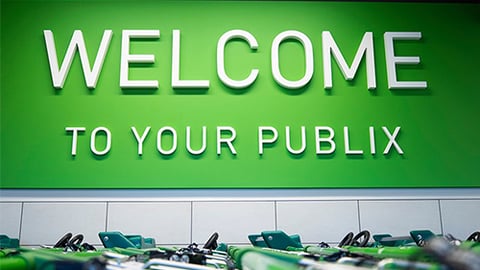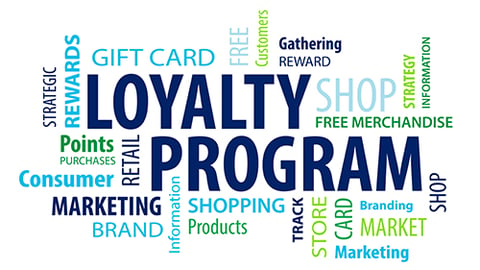Loyalty Programs Profit from Technology Upgrades
Loyalty programs have been around for decades, from box tops to punch cards, but never before has technology played such an important role in winning over customers. Thankfully, the days of keychains full of plastic cards are almost entirely over, replaced by digital programs that can garner much more data for retailers and a much better experience for customers.
Key Takeaways
- Many grocery retailers have been revamping their ideas of a customer loyalty program, turning to digital solutions.
- “Personalization” is the key concept in these programs, evident in such initiatives as Giant Food’s Flexible Rewards and Target Circle.
- Other loyalty programs, like Costco’s, offer shoppers enhanced benefits for a fee.
Eighty-seven percent of Americans are willing to have various details of their activity tracked by a brand in exchange for a more personalized and relevant relationship with the brand or program, according to Canada-based global customer engagement agency Bond Brand Loyalty.
Many grocery retailers have been revamping their ideas of a customer loyalty program. Lakeland, Fla.-based Publix Super Markets launched its first membership program, called Club Publix, in March. Club Publix is free and includes early notifications of sales, the ability to pay with a scan of the Publix app, the option of e-receipts, and a number of other digital features to ease reordering items and to personalize shopping lists.
Also in March, Landover, Md.-based Giant Food launched its new Flexible Rewards program giving customers more ways to earn and redeem rewards on both in-store and online purchases. The digital program includes Gas Savings (similar to the chain’s old Gas Rewards program), Grocery Savings and Special Rewards (such as free grocery items).
The word uttered repeatedly during the rollout of both of these loyalty programs, as well as many more in the grocery industry and other retail sectors, is “personalization.”
The Power of the Circle
Target rolled out its new customer loyalty program, Target Circle, nationwide in 2019, and Gomez talked about the process leading to its adoption at the NRF 2020 trade show in January.
“We’re trying to show our guests that we appreciate them and to give them something special for shopping at Target. But we made it awfully hard on them to navigate through everything that we were trying to do,” Gomez said of the number of options available before Target Circle, including the Red credit and debit options, the Cartwheel app, and the points-based Red Perks. “It didn’t allow us to offer the kind of connected experiences that make it clear to guests ... that Target loves them back.”
Target ultimately pulled the plug on its points-based Red Perks program, saying that it was too limiting and transactional, instead opting for Target Circle. The program’s features all come together on a mobile app where customers can keep track of savings, redeem offers and pay with their Red cards.
“The beauty of this program is its simplicity. It’s free, there’s no membership fee, there’s no complicated registration process,” Gomez noted. “Guests earn 1% every time they shop at Target, money that they can apply to a future shopping trip.”
Target has also gotten shoppers involved in its philanthropic efforts, giving customers a vote via the mobile app on which charities their local store should support and enabling them to donate their cash rewards to their favorite organizations if they so choose.
Gomez said that between October 2019 and January 2020, customers donated more than $2.4 million to almost 900 charities nationwide. During the holiday season, more than 40% of Target sales were connected to Target Circle.
According to Bond Brand Loyalty, programs that establish positive emotional connections with members see 27% more of their membership increasing their spend with the brand, and 70% percent of members are more likely to recommend brands with good loyalty programs.
Take a look online, and you’ll find thousands of memes and social media posts about shopping at Target. For many people, it’s about more than just the retail transaction.
Enhanced Benefits
Free isn’t the only option for grocers when it comes to loyalty programs. Thirty-seven percent of members are willing to pay a fee for enhanced benefits, and that number is even higher among Gen Z (47%) and Millennials (46%), according to Bond Brand Loyalty.
Germany-based Statista reports that Issaquah, Wash.-based Costco had 98.5 million cardholders worldwide in 2019, all paying for the perks of shopping at these stores.
Outside of the grocery industry, Boston-based footwear and apparel company Reebok launched its new loyalty program, Unlocked, in 2019, catering to two distinct clientele, potentially a solid idea for grocery as well. The tiered program addresses the needs of two types of customers. First is the traditional consumer who wants white-glove customer service, early access to products, free training and nutrition plans, and access to exclusive events. Second is the retailer’s community of verified training professionals desiring personal and professional development certification workshops.
“We were clear that we needed to use all of the data and the insights that were available to us,” says Matthew Blonder, VP, marketing and digital brand commerce for Reebok, about creating the new program. “The program could not set us on a dangerous and indefensible path of discounting. Rather, the program had to be based on a creative value for our consumer.”
The four buckets of rewards for Reebok Unlocked are partner rewards; early access or exclusive access to new products; exclusive access to activations, events and experiences; and ongoing career development workshops, training and certifications.
“This rich tableau of deeply researched benefit-based rewards have proven themselves critical to making the company incredibly successful,” Blonder notes. Reebok has seen higher purchase frequency and order values for members of the Unlocked program, and the tiered system provides the company with a wealth of data.
“This framework helps us to flag consumers who are likely to churn out of our ecosystem before they do something and targets them with measures to re-engage and bring them back into our arms,” Blonder explains, “encouraging growth in both purchase frequency and average order value.”
Craving More
Right now, digital reward programs through a shopper’s cellphone reign supreme, and that makes sense, especially in the grocery industry. A huge 67% of shoppers say that they use a grocery retailer’s mobile app while they’re shopping, according to Winston-Salem, N.C.-based technology company Inmar Intelligence.
Rewards have evolved from “25 cents off your next purchase” or “your fifth cup of coffee free” to much more personalized benefits for shoppers.
These ways of connecting will only continue to expand.
The Giant Co., based in Carlisle, Pa., and like Giant Food, a banner of Ahold Delhaize USA, rolled out an augmented-reality experience this past winter, rewarding customers for finding unique snowflakes throughout its stores that triggered an interactive character surprise on their phones and the accumulation of Giant Choice Rewards points. The game was simple and encouraged shopper interaction, two things that must exist in any loyalty program.
“When our brand is at its best,” Target’s Gomez said, “we’re never complicated or transactional. We’re easy and inspiring. We’re personalized and intuitive.”
Grocers must embrace technology to satisfy the deeper connection that customers crave.







